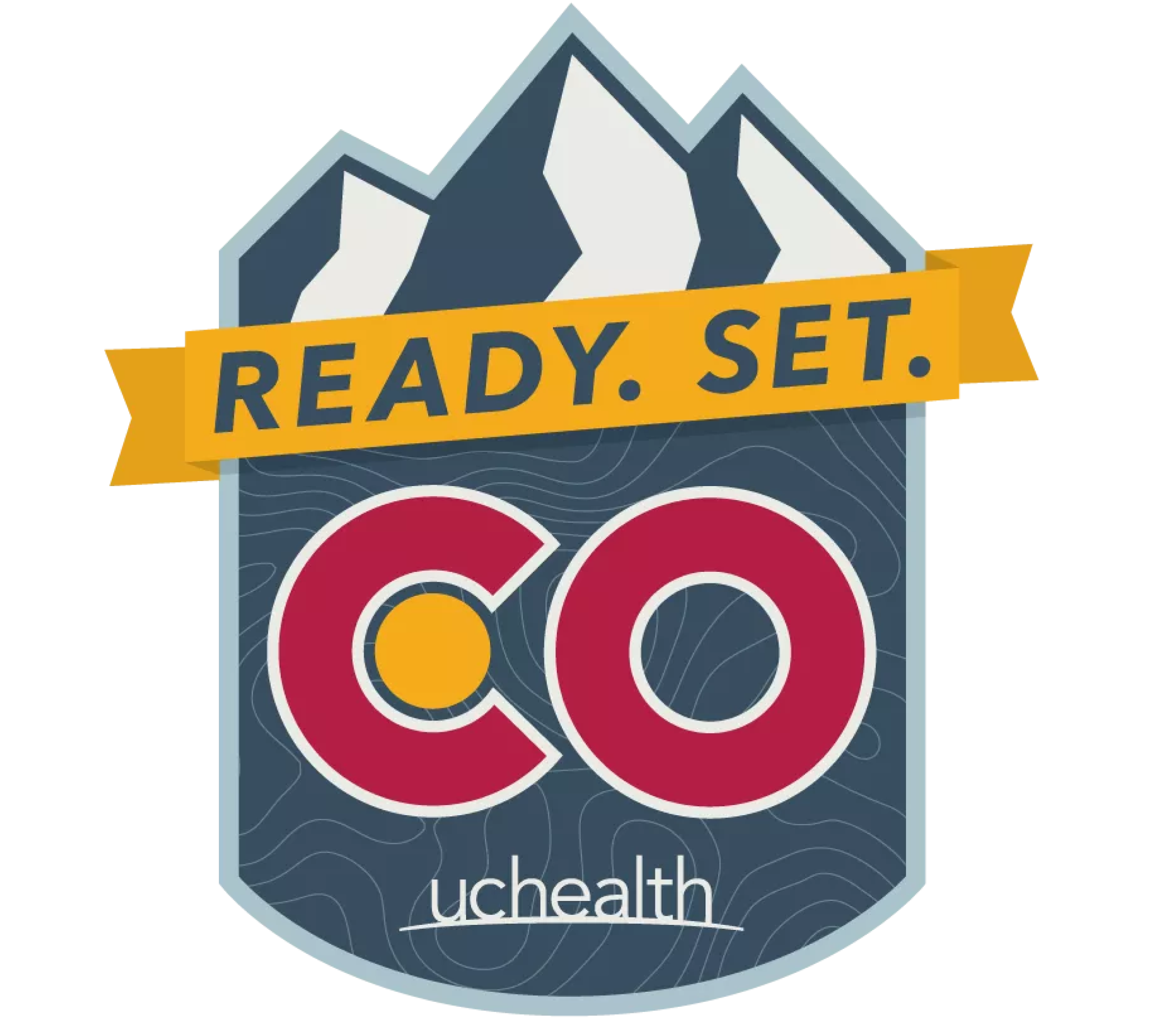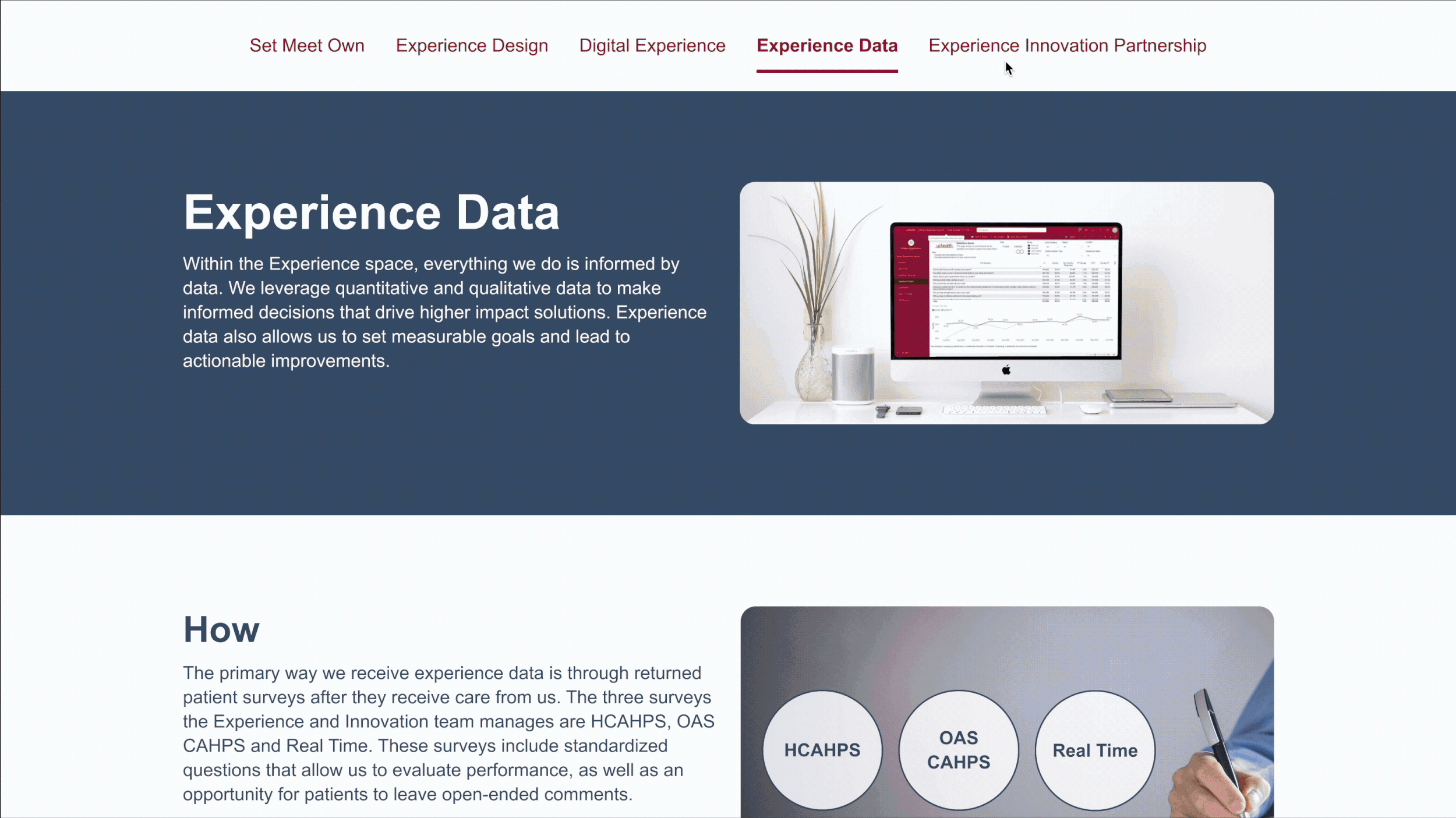
UCHealth -
Experience Hub
Project
Everything Experience, All in One Space.
As we deployed the UCHealth Set, Meet, Own Framework, we found that reaching a large organization was difficult with our small but mighty team. We interviewed several leaders and staff members around the system to see what would benefit those who couldn’t attend our design sessions, which turned into the idea to develop an Experience Hub that would talk about Set, Meet, Own, and act as a central database for everything experience related.
Myself, along with one other UX-Designer, spearheaded this project. We received support from our Experience team for content and accuracy.
ROLE
Experience & UX Designer; Web Designer
(User Research, Visual Design & Conceptualization, Wireframes, Prototyping & AB Testing, HTML and CSS, Publication)
TEAM SIZE
18
ORG SIZE
30,000+
INDUSTRY
Healthcare
TIMELINE
Q3 2024 - Q1 2025
TOOLS
Wordpress, Figma, Adobe Illustrator & InDesign
PRODUCTS
Experience Hub
Experience was more than just what’s happening inside the hospitals. We connected with our community, created partnerships with local and nation-wide businesses, and empowered our users with apps and websites that could deliver seamless digital experiences.
Our users wanted the Experience Hub to achieve 3 things:
Easy navigation to retrieve resources easily.
Language that was simple to understand.
Transparency on how campaigns and projects are developed.
Experience in All Forms
Based off user feedback, our goals became clear:
What is Set, Meet, Own? Why does Experience matter?
What resources are available that help support our staff?
How do we use data to support our initiatives?
Where do we go when Experience goes wrong?
Information Architecture & Wireframing
We developed many tools, resources, and escalation pathways for Set, Meet, Own, and needed to clearly navigate site users to the correct places quickly and efficiently. Myself, along with my other design partner, started on the wireframes and began visualizing our data, ensuring that information was properly organized and easily readable in a fast-paced environment.
Organizing Assets
Experience doesn’t just mean how we interact with each other a the hospital, but also how we engage with our community. While developing the Experience Hub, we thought to include all the things we do in the digital environment, partnerships with our communities, and showing our teams how to use data to drive and influence impact. With these new additions, we had multiple design sessions with our Innovation and Marketing teams to help showcase their assets and resources.
Experience, Innovation, & Marketing
Testing & Development
Before building out the site in Wordpress, we needed to make sure that our navigation performed seamlessly and content made sense. When moving through the content, we wanted to ensure that a story was being followed and there was a goal to each section.
What is it?
Who does it apply to?
Why should you care?
How can you can practice it?
Where does it impact yours and others’ everyday work?
After receiving positive feedback from our teams and leaders, I took our prototypes and developed the pages in Wordpress.
Successes
By creating the Experience Hub, we were able to reach 10x our normal audience with how small a team we operated as. Originally, we had wanted to host multiple design workshops to collaborate and build Set, Meet, Own, towards our teams’ goals, and have now have empowered our teams virtually to build tools with the resources we built with them.
The Conversion Rate was exciting to see because it showed that just under 60% of all our visitors had clicked on the resources we provided and created for the system.
Results & Learnings
Q1 2025 - Q2 2025
Average Monthly Users: 2.9k
Average Monthly Users New: 1.1k
Conversion Rate: 59%
Organizational Reach: 58% (excludes Director level and above)
Challenges
Too much change, too little time - the amount of QR codes, digital newsletters, and EPIC updates aren’t always fun additions for our staff. Our Experience Hub was seen as another “thing” for those looking to avoid more work, or wanted to just be told what to do instead of participating in collaboration.
The Two-man (in this case, woman) development team was small but rewarding to work with. My partner and I were the only ones versed in visual design and front-end development, but we succeeded in design sprints and building the site, going beyond expectations of some of our most critical peers.





